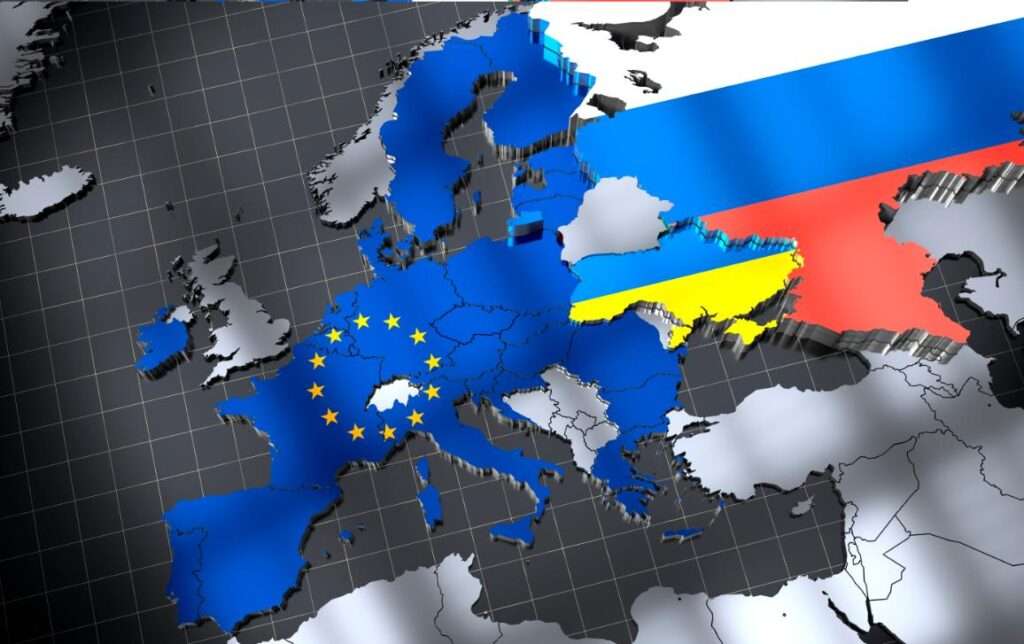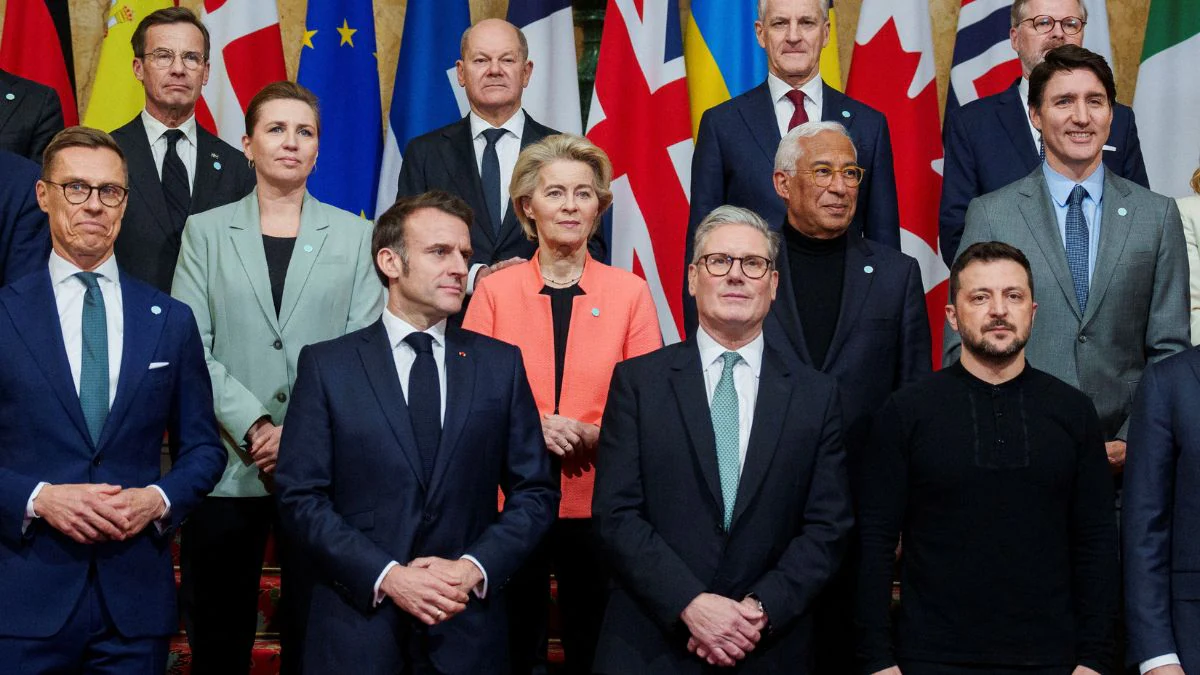Introduction:
Europe is witnessing its most dramatic military buildup since the Cold War. Triggered by Russia’s invasion of Ukraine and growing doubts about long-term U.S. security guarantees, nations across the continent are pouring unprecedented sums into defence. Germany, Poland, and France are leading this transformation, but as tanks roll off production lines and fighter jets fill the skies, a pivotal question looms: Will this rearmament keep the peace, or could it inadvertently push Europe closer to war?
From Peace Dividend to War Footing
For three decades after the Cold War, Europe cashed in its “peace dividend,” allowing military capabilities to atrophy. By 2014, when Russia seized Crimea, defence spending among EU nations had dwindled to just 1.1% of GDP. Britain’s military budget shrank by 22% in real terms between 2009 and 2017. Tanks were scrapped, artillery stocks depleted, and conscription abandoned across much of the continent.
This strategic complacency left Europe vulnerable. Today’s rearmament isn’t simply about expanding forces, but rebuilding lost capabilities, a far harder task after decades of neglect.
Russia’s full-scale invasion of Ukraine in February 2022 shattered remaining illusions. In 2024 alone, European defence spending increased by 17%, the largest increase since the Cold War. NATO members who once struggled to spend the alliance’s target of 2% of GDP are now arguably even debating spending 5% of GDP by 2035.
German Chancellor Friedrich Merz captured the new mindset: “Putin only understands the language of power.” Germany’s sudden 100-billion-euro defence fund and Poland’s breakneck military expansion, now consuming 4.7% of its GDP, reflect this historic shift.
The Numbers Behind Europe’s Military Surge
NATO’s Ambitious New Targets
At a pivotal 2025 summit, NATO allies agreed to raise defence spending to 5% of GDP by 2035. The breakdown is telling: 3.5% for troops and weapons, 1.5% for infrastructure and cyber defences. Where only three members met NATO’s 2% benchmark in 2014, eighteen cleared it in 2024.
The EU’s 800-Billion-Euro Plan
The European Commission’s “Readiness 2030” strategy aims to mobilize 800 billion euros in defence investments. A new funding mechanism, the Security and Defence for Europe (SAFE) program, will finance joint arms purchases, with strict rules favoring European-made equipment.
National Efforts:
Germany’s Military Revolution
- Defence budget soaring from 86 billion euros in 2025 to 153 billion by 2029
- Orders for 3,500 new armored vehicles, including 1,000 advanced Leopard 2 tanks
- Plans to field 17 combat-ready NATO brigades by 2029
Poland’s Frontline Buildup
- Spending 4.7% of GDP on defence in 2025, more than the U.S.
- Massive U.S. arms deals: F-35 jets, Apache helicopters, Abrams tanks
- Now hosts critical NATO missile defence systems
France’s Dual Strategy
- 413 billion euros committed through 2030
- Nuclear arsenal modernization as top priority
- Leading development of Europe’s next-generation fighter jet
Britain’s Comeback
- Raising defence spending to 2.5% of GDP by 2027
- Army undergoing its largest modernization since the 1980s
- heavily in drone and AI warfare technologies
Why Europe Is Rearming: Three Key Reasons
Deterring Russian Aggression
NATO has dramatically reinforced its eastern defences, doubling troop deployments along the frontier with Russia. This muscular posture sends a clear signal: any possible Russian incursion will be met with devastating conventional counter strike. The goal of the alliance is to make aggression mathematically impossible, by outgunning the adversaries and quickly mobilising capabilities.
Hedging Against American Volatility
Growing uncertainty about long-term U.S. commitments have led Europe to re-examine its strategic vulnerabilities. While Europe will continue to view NATO as the foundation of continental defence, it is making serious investments to develop greater autonomous capabilities. The challenge is struck a balance between developing self-reliance and not undermining the deterrent effect of the transatlantic alliance.
Fortifying Defence Industrial Security
Recent global disruptions have exposed dangerous vulnerabilities in military supply chains. Europe is now aggressively working to reduce critical dependencies, particularly on Chinese rare earth elements and Russian titanium. This industrial reshoring represents both a security imperative and an economic strategy in an increasingly fragmented world order.
The Risks: When More Weapons Don’t Mean More Security
Escalating Arms Race Dynamics
European intelligence assessments indicate that Russia’s rebuilding of its military is occurring faster than expected. Analysts believe Moscow could have enough conventional forces to engage NATO directly by 2030. This timeline is especially troubling since the New START treaty regulating nuclear arms will expire in 2026, which has been the last substantial constraint on strategic weapons competition between Washington and Moscow. The New START treaty is in essence, a transparency and verification agreement at the very time in history when the danger of reinstating nuclear competition appears to be greatest.
Fiscal and Social Trade-offs
The rapid growth of defence budgets produces huge tension with Europe’s historical pledge to universal welfare. Germany’s historic decision to suspend its constitutional debt brake temporarily for defence, demonstrates the tough financial choices confronting European governments. As defence budgets begin to mimic Cold War spending levels, the dilemma policymakers face is ensuring security and paying for competing demands (health care, education, and pensions), and this may test public support for ongoing rearmament, and that many wounded fiscal choices could lead to healthy political debates about national priorities in the years ahead.
Industrial Capacity Gaps
Europe’s defence manufacturing base faces structural challenges in meeting wartime production demands. The continent’s historically fragmented arms industry, comprising numerous national champions rather than consolidated transnational producers, struggles to achieve the economies of scale needed for mass production. This disadvantage becomes starkly apparent in artillery shell manufacturing, where Russia’s output currently exceeds NATO’s European production by a three-to-one margin. Such disparities in conventional munitions capacity raise serious concerns about the alliance’s ability to sustain prolonged high-intensity conflicts, potentially undermining the credibility of its conventional deterrent.
Conclusion:
Europe faces a difficult balancing act. It must build up its military to protect against Russian threats, but not so fast that it causes more problems than it solves. If done carefully, stronger defences could keep the peace. But if handled poorly, it might waste money, divide societies, and even increase the risk of war. The peaceful years after the Cold War are clearly over, Europe now enters a new era where strong defences matter more than ever before. The choices made today will determine whether this military buildup brings security or new dangers.



